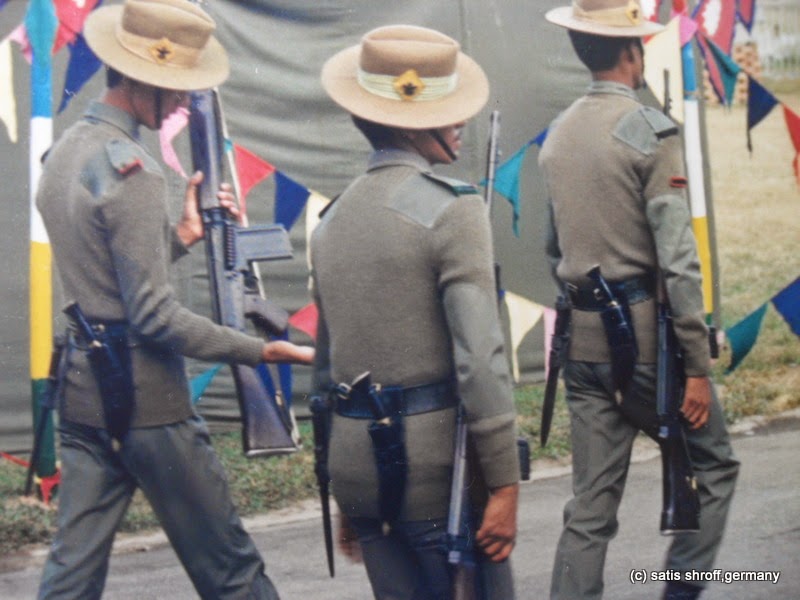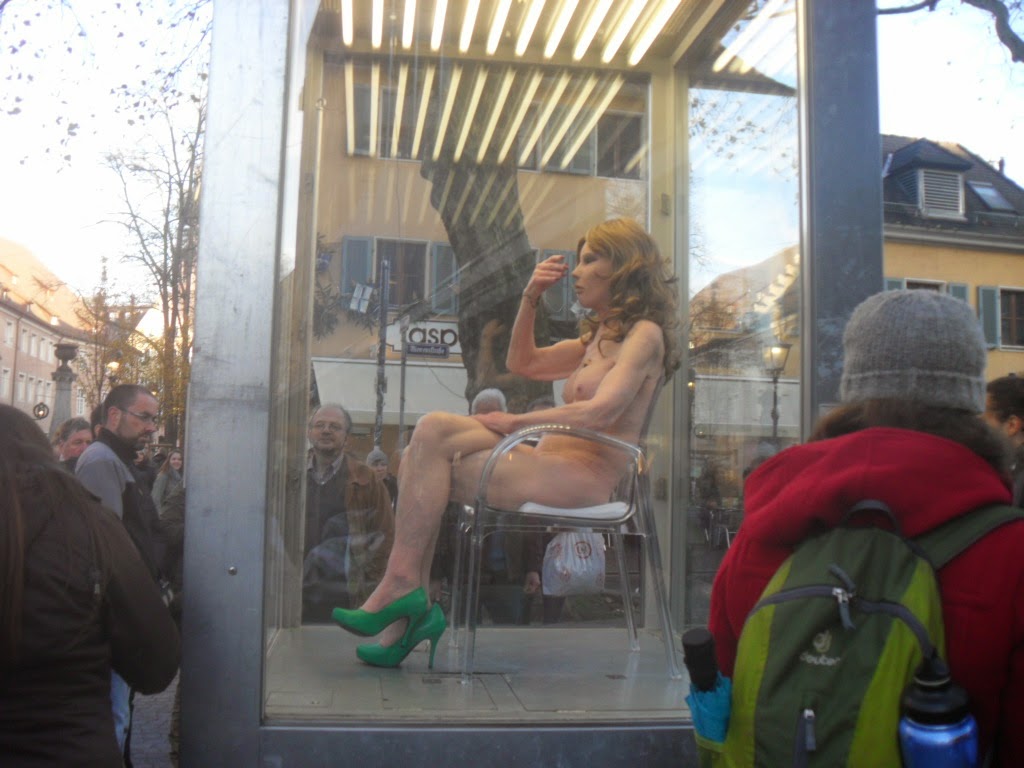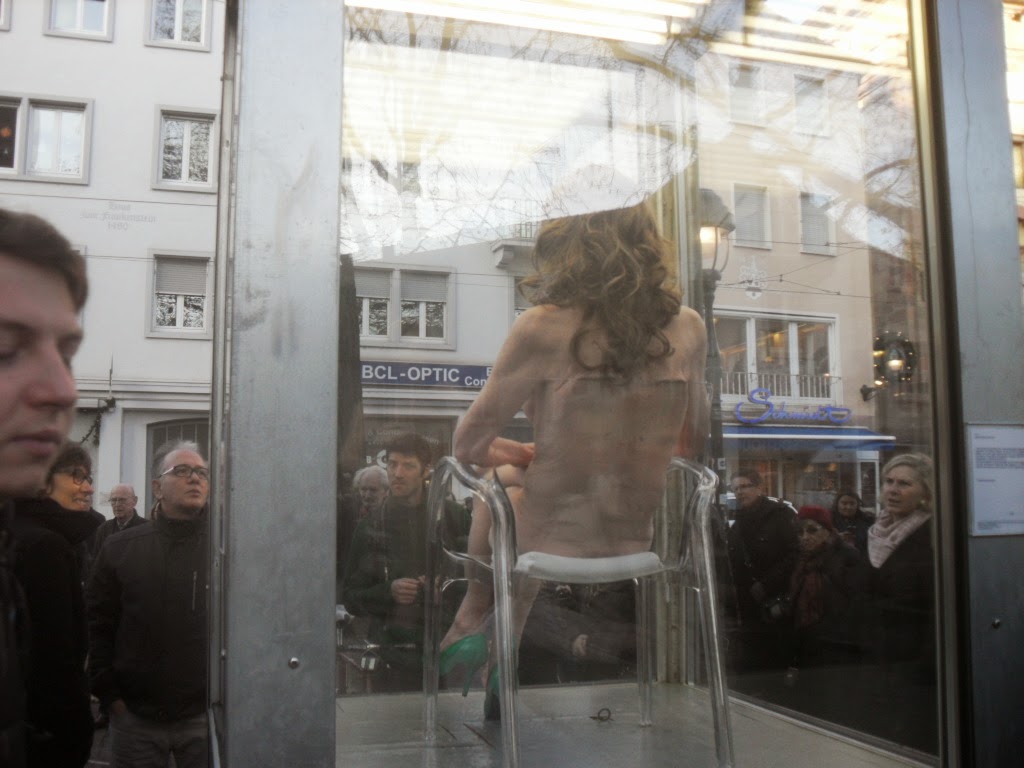Satis Shroff beim Freiburgs Dattler nach der Einbürgerungsfeier mit Verleihung des "Freiburger Integrationspreises - für eine offene Stadt" am Samstag, 13. Dezember 2014 im Historischen Kaufhaus am Münsterplatz
 Creative City Freiburg / Satis Shroff
Creative City Freiburg / Satis ShroffFreiburg's Oberbürgermeister Dr. Dieter Salomon welcomed the new non-Teuronic migrants who received their German passports this year on Saturday, December 13, 2014 at 11:30 in Freiburg's Historical Kaufhaus, located near the cathedral. On this occassion the Freiburger Integration Prize 2014 was awarded to an intercultural newspaper called InZeitung, which is intercultural, international and integrative in its purpose and enjoys the financial support of Freiburg city.
This year's words of greeting was held by a sympathetic blonde lady Virginia Gonzalez Juareg who hails from Freiburg's partner-city Granada, is married to a Freiburger Bobbele and has two children. Dr. Salomon greeted the guests and handed over the 3000 euro Prize to the editorial team of InZeitung. The music was conducted by the energetic and fantastic musician-cum-conductor Ro Kuijpers and his Heim and Flucht Orchestra comprising migrants and Germans and the songs and rhythms were catchy and multicultural in tone. After the event I mixed with the guests and had chats with Dr. Dieter Salomon, whom I know since our student days at the Thomas Morus Burse in Littenweiler, his assistant Frau Martina Ruh and Klaus Schüle from the CDU Kreisverband. When I told Klaus Schüle that I've been singing with the men's choir in Kappel he replied, 'Oh, then you're absolutely integrated.' I didn't, of course, tell him that a member of the men's choir had recently said to me:'You're an Ausländer.' A foreigner. His line was:'Man muss schlagfertig sein in Deutschland.' Perhaps he found me too polite.
Anyway, it was reassuring to hear Dr. Salomon welcoming the new, migrated Germans. They have their German passports and the same rights as the German white mainstream but why would a member of a men's choir remind me that I'm an Ausländer, if not because of dermatological reasons? After living over 35 years in Freiburg, I decided to become a German whereby I had to forfeit of my former citizenship. I chose the German identity but now I have second thoughts. Later I also had a chance to talk with a photograph from the InZeitung Reinhardt Jacoby, who was all praise for Bhutan and its Brutto Gross Product of Happiness, and how happy the Bhutanese seemed to be. Well, the Danes are also a happy people according to the latest statistics.I told him you can go to Bhutan only when your can pay a lot of money, whereas every Fritz, Hans and Jakob can enjoy Nepal and its beauty. No, we didn't talk about the Lhotsampas of Bhutan who have found asylum as contingent refugees in the USA and Canada. I'm sure their brutto happiness product has shot up now.
In a rubric in cooperation with the local Goethe Instutute writes Lybov Demidova (Kazachstan): 'I came from Kazachstan and was surprised to see so many elderly people doing sport. In Kasachstan old people don't ride bicycles. Another student from Japan named Masashi said, 'I was surprised to notice that no building was highr than the cathedral (Münster). The cathedral is very old but it is perhaps the biggest in the city.'
In Kathmandu we had a similar case: the Narayanhiti Palace of King Birendra was the highest building in the capital and no other commoner was allowed to supercede the palace's status. King Birendra was killed by his son Prince Dipendra in a palace massacre, and the successor to the throne King Gyanendra has become a commoner due to the victory of the maoists in the former Himalayan kingdom Now it's a federal republic and the king's palace has become a tourist attraction. Moreover, Kathmandu is a tectonic valley and subject to earthquakes.
Lena Lytvynenko, a Ukranian artist-cum-art historian, had published a recipe for warenyky with seasonal berries or apples. The dumplings remind you of tortillinis (with cheese filling) from Italy, momocha from Katmandu and Afghan mantus with minced meat.
Another articles in the autumn-winter issue of InZeitung was one with the title 'many miles away' about the Nobel Laureate for Literature Hertha Müller, who still desires to being back her land Romania or Hannah Arendt whi didn't want to return to Germany, worked actively for the USA during the Nurnberg Trials, or the victims of homophobia in Russia.
During the Third Reich a good many Germans sought asylum as refugees in the USA, UK, Switzerland, Portugal and Greece and countries that were thought to be safe against the Teutonic hordes of the Third Reich.Their experience in exile has made European philosophy and culture what it is today. It might be noted that the Germans were not only political refugees but also economic refugees.
Migrant Writing in the English speaking world is a key phenomenon in English Literature and the USA does a lot for the authors from other parts of the world who have found a home in the USA. In Germany this phenomenon is in the infantile stage and, as far as this writer sees it, only migrant-writers from Turkey, Spain, Italy, Greece which are already well-established and integrated in the German diaspora are feted by the Cultural Departments of German cities. Who speaks for the the minorities from countries like Pakistan, Nepal, Columbia? If these writers don't know how to write in German and speak it appropriately, they are ignored, with the result that their voices die out.
At a European level and since Britain has its colonial resources that still use English as the main language of communication, the BBC and the British Council organise Creative Writing Workshops for migrants because they have an abundance and wealth of stories within them, the trials and tribulations that they have had to overcome till they finally reached a haven, a refugium where they can breathe in freedom. It is with this hope that people flee from their persecutors after being mishandled due to their race, religion, ethnical, social or political colour, poverty and hunger to the free, democratic northern hemisphere, where there are people with hearts for their tales of misery.
 |
| Satis Shroff with CDU politician Klaus Schüle |
 |
| Satis Shroff: Lecturer, author, blogger |
 |
| Green politician Dr. Dieter Salomon |



%2Bstefanheinz%2B2009.jpg)




























